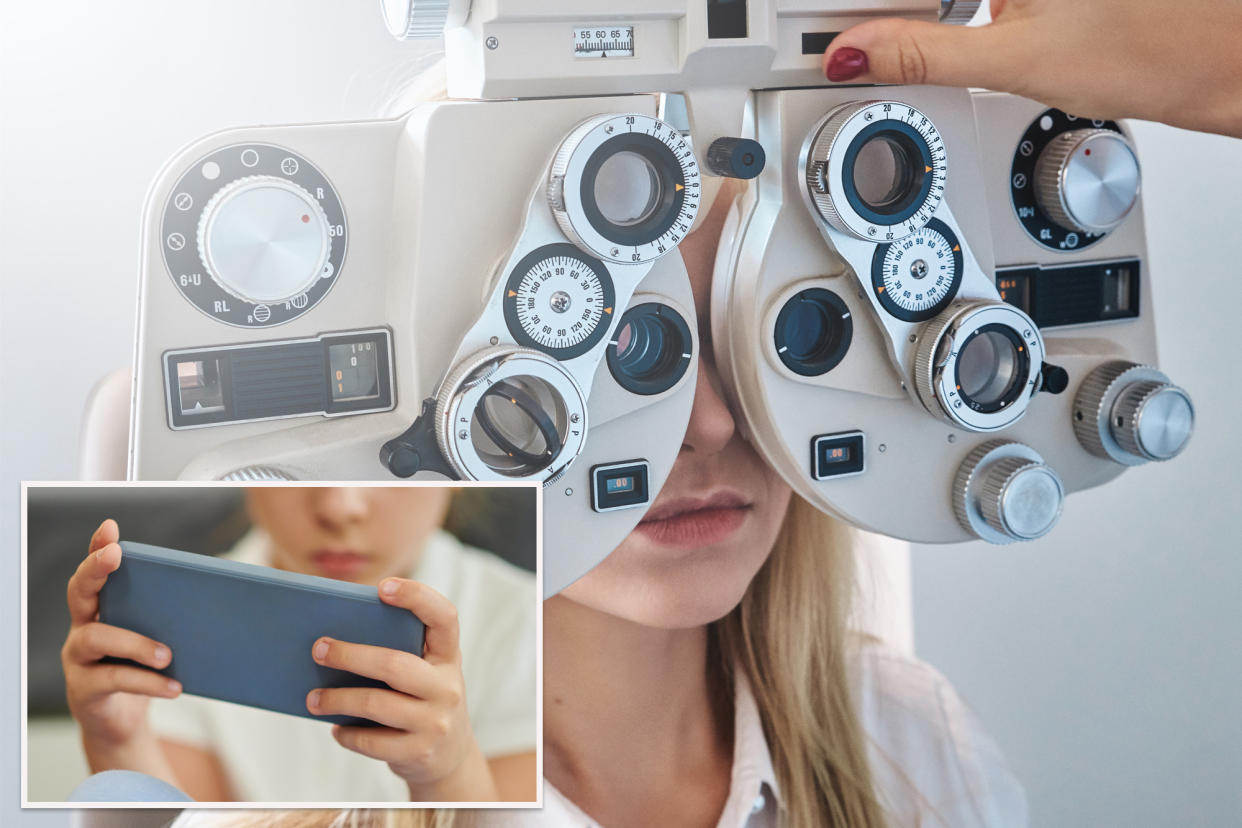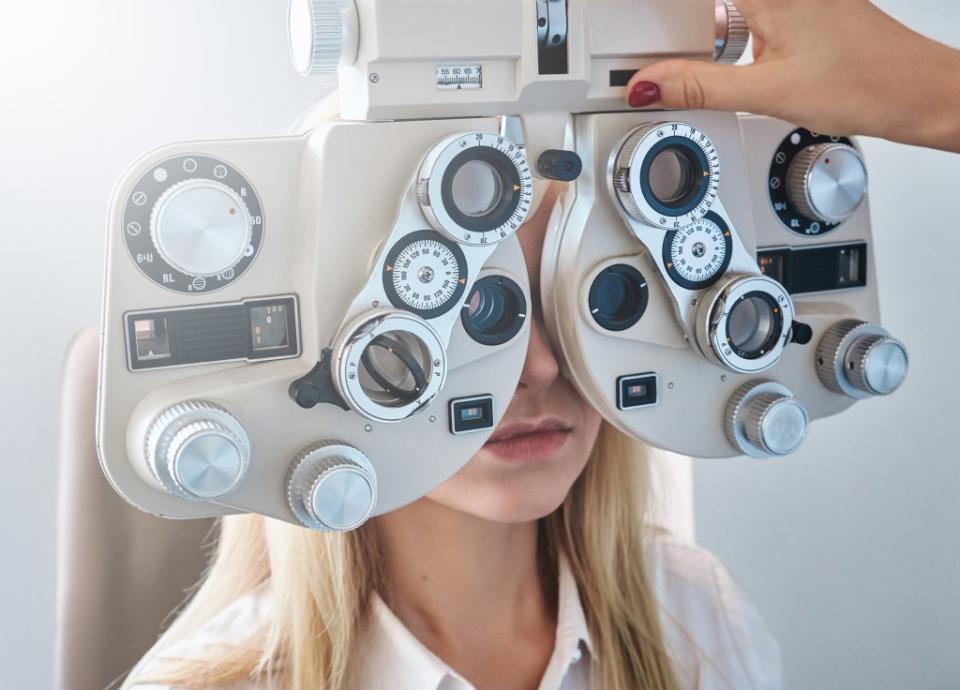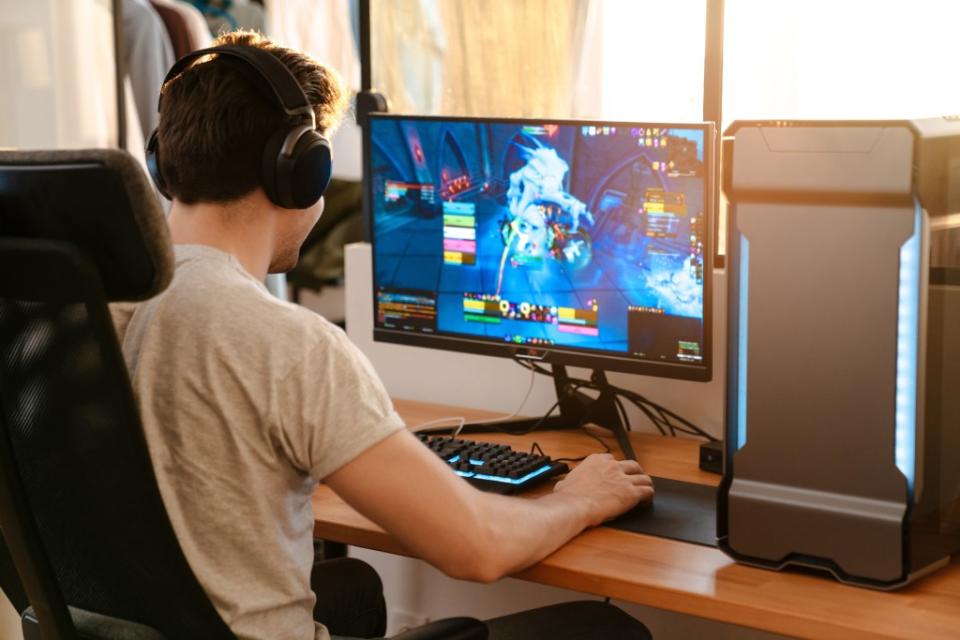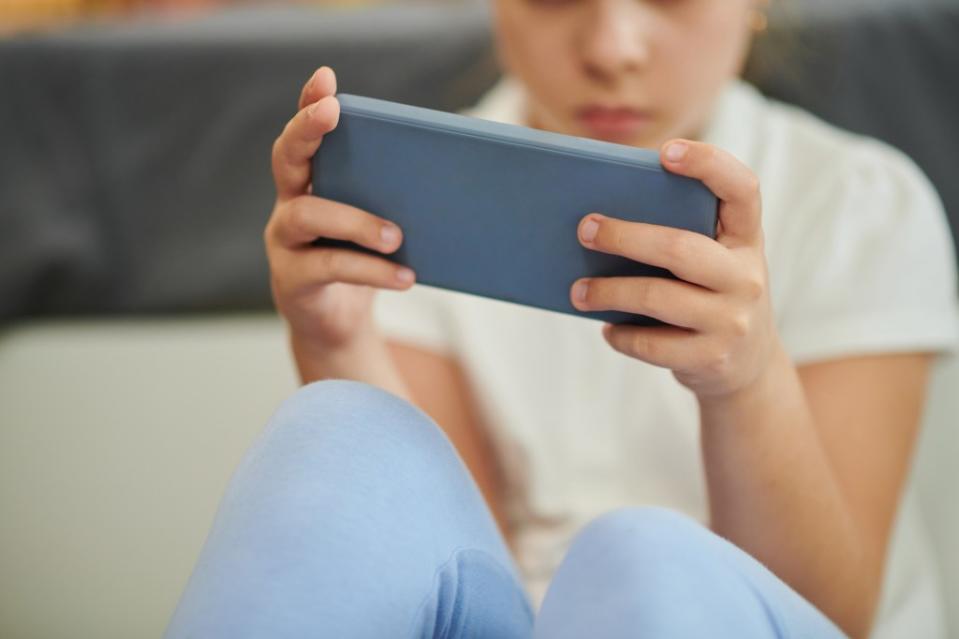Gen Zers face ‘blindness epidemic’ due to lack of sunlight from staring at phones: report

Gen Zers are getting increasingly near-sighted from staring at their electronic devices all day and face a blindness epidemic if they continue to stay indoors while phone-addicted, a leading eye surgeon warns in a new report.
The rates of near-sightedness, or myopia, have been skyrocketing across the world with an increase of 46% in the UK over the last three decades, according to the Daily Mail.
In the US, a study from California says myopia has spiked a staggering 59% among teenagers.
And Zoomers face mounting risks of developing serious vision problems – even leading up to blindness – after missing out on natural sunlight during puberty, the outlet reports.

Dr. Joern Jorgensen, a world-renowned eye surgeon at Laser Eye Clinic London, warned that the situation will only get worse because Gen Zers — people born between the mid-1990s and mid-2010s — aren’t getting enough dopamine.
In the retina, high levels of dopamine tunes vision for daylight conditions.
Time spent in the sun boosts dopamine levels while staying indoors reduces the amount of the important neurotransmitter – leading to serious eye problems.
Meanwhile, the amount of time spent staring at electronic devices a few inches away from the face can lead to myopia.
“During a critical time of their lives they are not getting natural sunlight and that in turn is causing a very noticeable rise in myopia. It is alarming and what we are seeing is an epidemic,” Jorgensen told the Daily Mail.
“Going outside in the daylight to play football, sports of any kind or just to play with friends causes a chemical process which releases dopamine,” he said.

“We know that it is an inhibitor to the type of growth in the eye which causes short-sightedness. The horizontal part of the eye lengthens and continues to grow, making it difficult to focus,” Jorgensen explained.
“We can encourage children to go outside and do more sports, but you can’t reverse what has already happened with social media playing such an important part in their lives,” he continued. “The second damaging factor is the amount of near work younger people are doing which is also damaging.”
The expert warned that myopia can lead to blindness in serious cases.
The COVID-19 pandemic kept children stuck indoors and focused on screens, which further sped up the global trend toward worsening eyesight, according to a 2022 article in Psychology Today.
Studies in California and Sydney, Australia, found that time spent outdoors was strongly linked to a lower risk of near-sightedness, according to the outlet.

Youngsters are reportedly likely developing myopia earlier due to increased screen time and a lack of sunlight exposure – and not just because of genetics.
“We’re talking about [children who are] age 4 or 5 years old,” Dr. Maria Liu, an associate professor of clinical optometry at The University of California, Berkeley, told NPR.
By 2030, 40% of the global population will be nearsighted, according to the World Health Organization.
Holding a screen close to the face means the eyes blink less and over-compensate when focusing for hours – leading to a gradual lengthening of the eyeball and changes to the lens.
Serious cases of myopia among young people also increase the chance of them developing macular degeneration — a leading cause of blindness — by 41%, the Daily Mail reported, citing studies.
“Treating AMD (age-related macular degeneration) is one of the biggest costs facing the NHS, it is a great drain on resources,” Jorgensen said, referring to the UK’s National Health Service.

“A single injection of Lucentis, which is used to treat AMD, is £1,000 and a patient needs to have it every month or risk blindness,” he said.
“Serious short-sightedness also dramatically increases the chances of developing other serious conditions such as glaucoma and retinal detachment,” the doctor said.
“It’s a very serious situation, we are seeing cases of high myopia 30 times more often and that triggers the four drivers of eye disease, cataracts, glaucoma, retinal detachment and AMD,” he added.
Dr. Irfan Jeeva, from Pinderfields Hospital in Wakefield, West Yorkshire, said more youngsters need glasses because of their exposure to digital devices.
“We’re still learning about it, but there’s enough data for me to believe that increased screen exposure can affect your visual health, mental health, physical health and emotional health,” Jeeva told BBC Look North.

“Screens are quite addictive. They have an internal reward mechanism that makes you want to spend more time with them,” he said.
The Global Myopia Awareness Coalition has found that 52% of children play outside less than their parents did when they were young.
Last year, Myopia Focus launched a petition calling for more NHS funding to treat short-sightedness among children.
“Due to changes in lifestyle, an increasing number of people are at a higher risk of developing sight-threatening conditions linked to myopia. This should no longer be considered a potential threat — it is very real,” Jason Higginbotham, an optometrist who started the campaign, told the Daily Mail.
“We want to put pressure on ministers to do something about it now. The younger therapy commences, the less likely that your child will be at risk of sight loss in the future. We need the government to act,” he said.
Liu, the associate professor of clinical optometry at UC-Berkeley, urged parents to limit screen time and get their kids playing outside as much as possible.
“They need to play with real toys,” Liu told NPR. “They need to engage in real outdoor life.”

